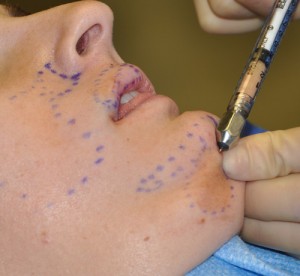Facial skeletal surgery, what I often call facial structural surgery, offers many options for changing the form of the face. From jaw repositioning to bone reshaping to implants, significant foundational changes can be done. While much of facial skeletal surgery is done in the young (under age 45), this does exclude older patients as well. But no matter how the facial bones are changed or at what age, the final result is heavily influenced by how the overlying soft tissues settle and heal over the underlying bone changes.
While bone modifications can make a significant difference in the external facial shape, they can not always make every desired facial improvement. Some facial changes require a combination of both bone and soft tissue augmentation to get the desired effect.This is particularly true in cases of facial asymmetry and areas of differing soft tissue thicknesses.
One of the soft tissue effects of facial skeletal surgeries in some patients is that the overlying soft tissues can thin after surgery. This is almost exclusively the result of subcutaneous fat atrophy from the trauma and swelling of the surgery. This is seen in cases from facial fracture repair to orthognathic surgery.

Fat grafting today has many versatile uses in facial surgery. While often perceived for aesthetic facial augmentation only, it has many reconstructive uses as well. It is the missing link in facial skeletal surgery to make contour changes that may remain deficient despite underlying bone modifications. For example, I recently treated a middle-aged male patient with severe facial lipoatrophy from antiviral medication with temporal and combined malar-submalar implants. But as was suspected before surgery, the area between the temples and the cheeks across the zygomatic arch remained deficient, creating an ‘hourglass deformity’ This was filled in with fat injections as well as around the lower end of the cheek implants to give a confluent facial contour improvement.
Dr. Barry Eppley
Indianapolis, Indiana


